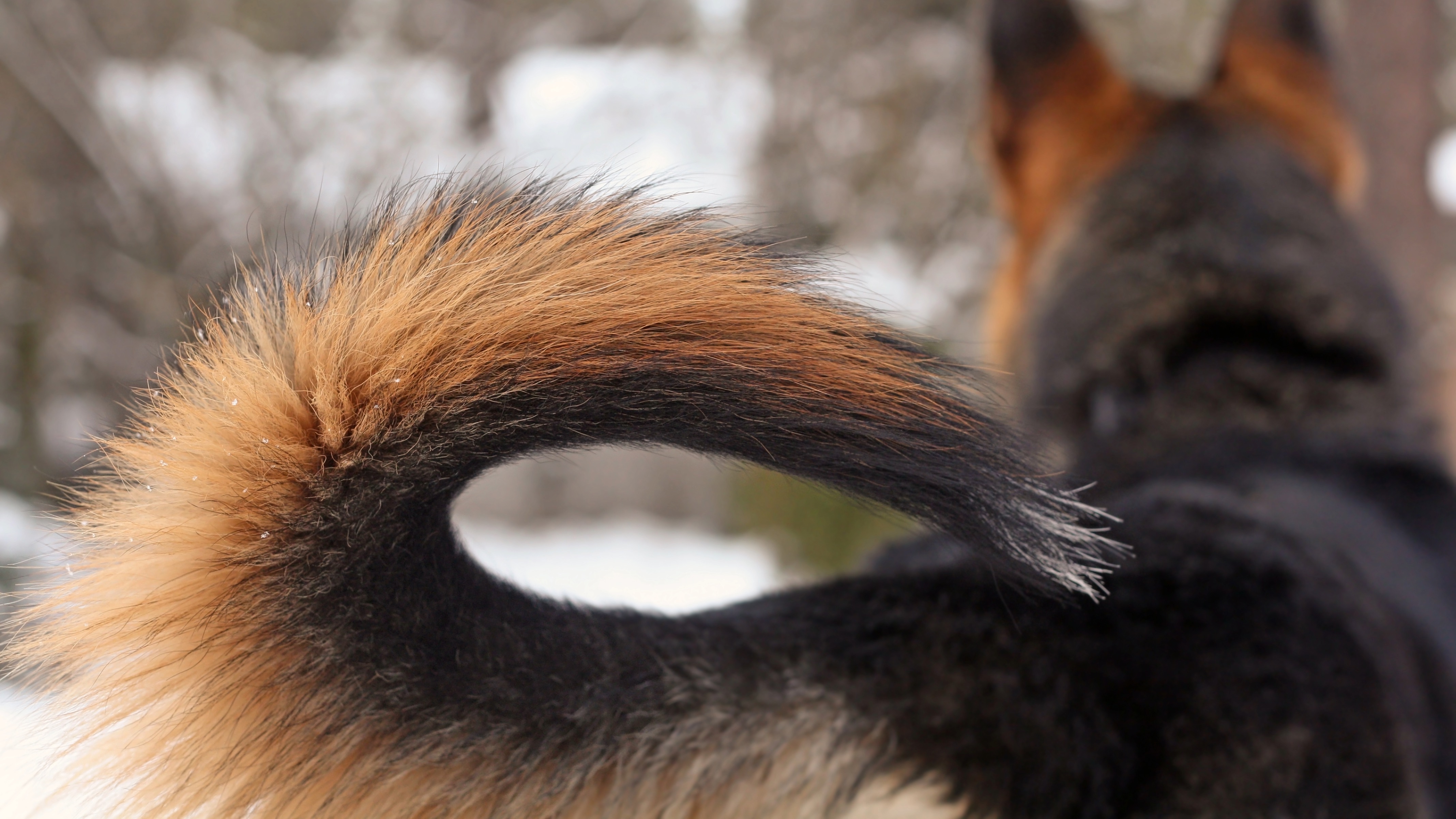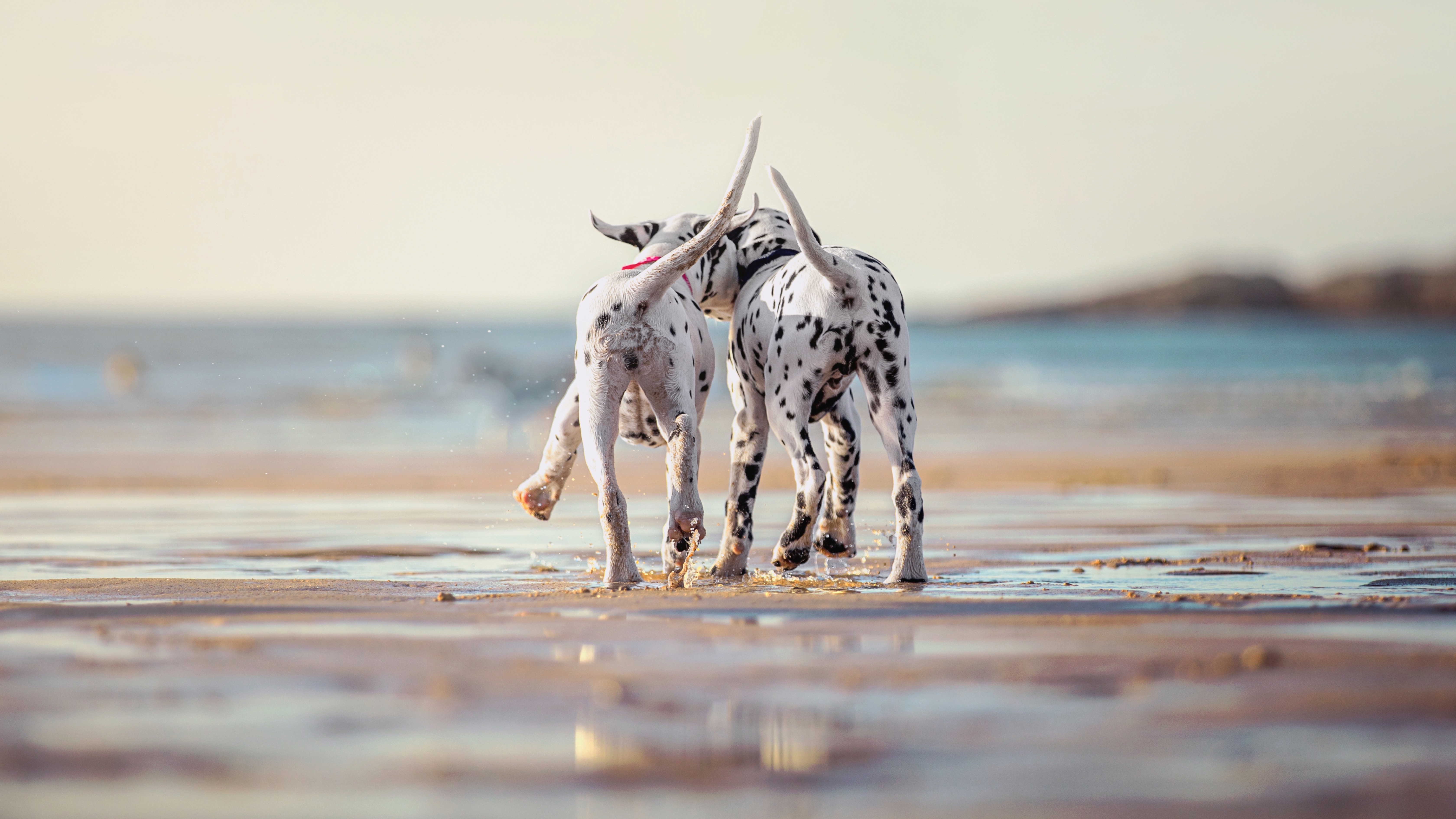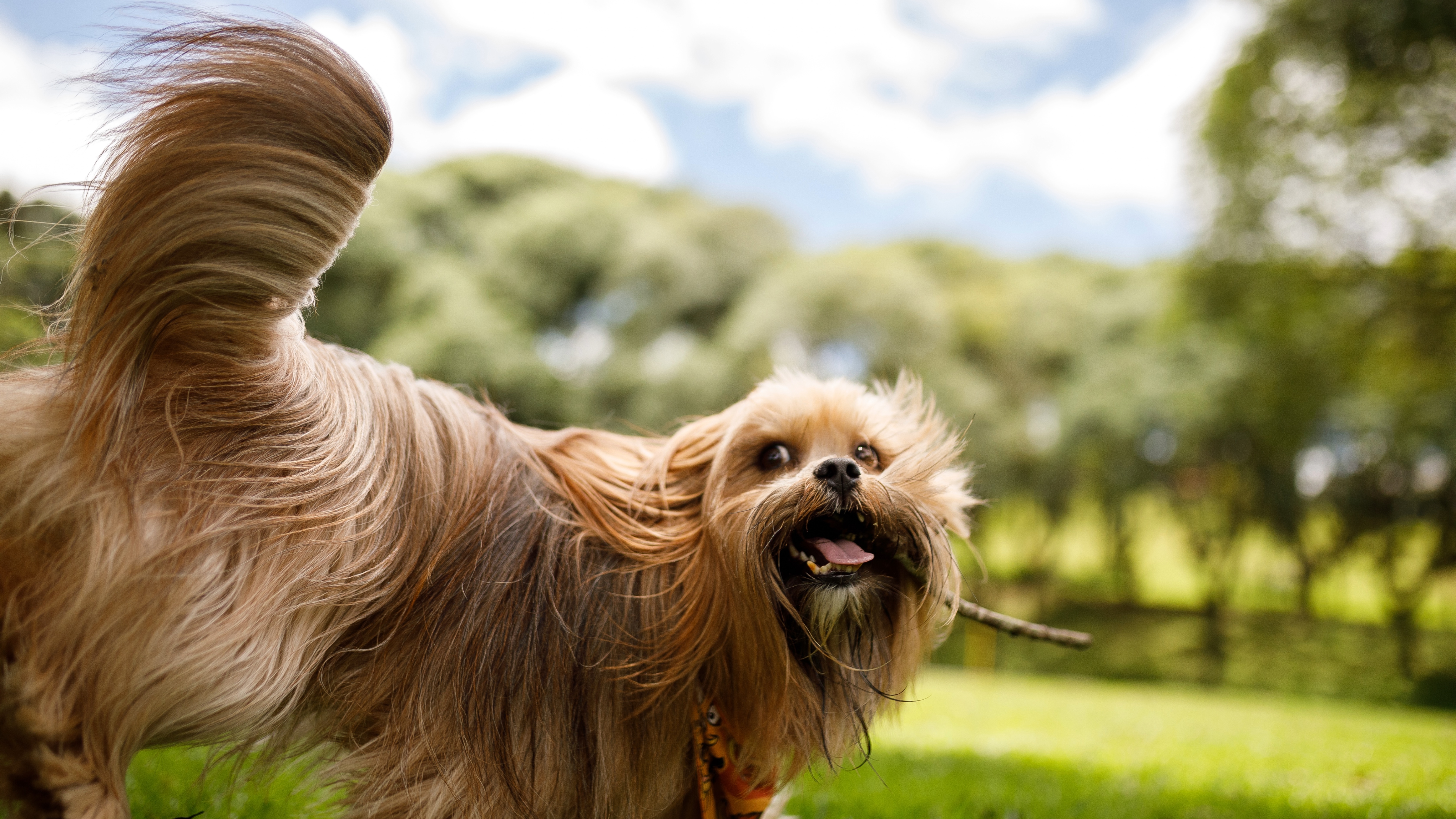
Have you ever found yourself asking the question, why do dogs have tails? Since most dogs are born with tails, it's safe to assume they're there for a reason — but aside from the fact that they make our canine companions look utterly adorable, we've often wondered what purpose they serve.
Nothing warms our heart more than seeing a pup's tail wagging as they move in to greet us, and yet it turns out that a dog's tail does a lot more than just communicate excitement. It helps them with things like movement and balance too, which certainly comes in handy when they're in hot pursuit of one of the best dog toys!
One of the best things about owning a dog is that you're constantly learning new facts about your forever friend that can help you understand and love them better. So with that in mind, we spoke to expert vet Dr. Rebecca MacMillan who gave us the scoop on everything you need to know about dog tails — including whether all dogs have them and if some breeds use their tails more than others.
Why do dogs have tails?
At some stage or another, everyone who lives with a dog finds themselves wondering why their pup has a tail. And as it turns out, there are several good reasons for this cute feature.
1. Tails help with movement
If you've ever seen one of the best outdoor dog breeds tearing around in nature's big backyard, one thing you've probably noticed is just how agile they are — a skill they have their tail to thank for.
"Tails help with movement, especially at high speeds," explains Dr. MacMillan. "The tail itself moves, acting like a counterweight, to help them change direction when they are running. When your dog is racing around you might notice that their front legs start to go in the new direction, but their back legs carry on as they are. It is then the tail that moves to the other side to help the rest of the body turn in that same direction also."
2. Tails aid in balance
While your dog's tail is brilliant for helping them to change direction at high speeds, that's not the only purpose it serves.
"Tails also help with balance at slower speeds," Dr. MacMillan says. "A dog walking along a narrow ledge or climbing rocks will use their tail to keep them on target by adjusting its positioning accordingly."
If you're looking for tips to help keep dog walks fun, why not try some doggy parkour? Creating an obstacle course for your pup using tree stumps, benches and logs is a great way to help them practice their balance — and see the power of their tail in action!
3. Tails help with communication
One of our top tips for first time dog owners is to read up on dog body language as this is a great way to strengthen your bond with your pup. Your dog's tail in particular can tell you a lot about how your fur friend is feeling.
"Dogs communicate with their tails," Dr. MacMillan confirms. "For example, submissive dogs will keep their tails down to reduce their scent and keep a low profile. Dominant dogs will carry their tail up high to let everyone know they are there.
Emotions can be conveyed with their tail too. Most owners are aware of the enthusiasm of a happy dog with a waggy tail, so equally we soon know something is wrong if their tail is limp. Tail wagging is a learned behavior, very young puppies don't do it, they develop these skills as they grow and interact with each other. Other emotions such as fear or aggression can be conveyed in tail movement."
Do all dogs have tails?

One of the little known facts about cats and dogs is that not all of our fur friends have tails! While most breeds are born with tails, there are some that are born with very short tails or no tail at all.
"Most dogs have tails, however there are a small number of breeds that are born without them," says Dr. MacMillan. These include the French bulldog, Boston terrier, Brittany spaniel, Pembroke Welsh corgi, and English bulldog. This is due to a genetic mutation, which leaves them with a deformity of the tail. For some of these dogs, their stumpy tail can cause them issues with bulldogs being especially prone to something called corkscrew or screw tail (twisting or abnormal fusing of the vertebrae)."
Do some breeds use their tails more than others?
If you're anything like us, you may have found yourself wondering if some dog breeds use their tails more than others. And as it turns out, they do!
"Some breeds do use their tails more than others and this usually comes down to the type of exercise or work that they do," confirms MacMillan. "For example, dogs that were bred to swim like Labradors and golden retrievers have thick rudder-like tails which help to steer them through the water. Their tails will be used much more than a more sedentary dog like a pekingese, for example.
There are also other genetic factors at play with some breeds like the cocker spaniel much more likely to wag their tail at relatively low levels of stimulation/interaction, compared to breeds that seem more aloof like the basenji. This suggests that the amount of tail wagging is hereditary.
Do dogs have full control of their tails?

While it may appear as if behaviors like tail wagging are spontaneous, your dog has full control of the muscles in their tail, just like they have control over the muscles in the rest of their body.
"Dogs do have full control of their tails; it is a highly specialized part of the body," says Dr. MacMillan. "They can control whether it is raised or lowered, as well as side-to-side movement. The speed at which it can be moved is also under their full control (although it may not seem like it at times!).
It is said that dogs control whether they wag their tail more to the left or more to the right depending on the person they are responding to."
Do dogs have feeling in their tails?
There are some things you only know if you're a dog owner and if you've ever accidentally stood on your pup's tail, then you know that it's definitely a sensitive area.
"Dogs have excellent sensation in their tails," Dr. MacMillan confirms. "They contain nerves that allow them to feel pain, as well as tendons and bones. You will know this to be the case if you have ever accidentally stood on your dog's tail — they usually cry or try and jump away from you.
Despite this ability to sense pain many dogs will happily beat their tails against walls (or your legs), so, understandably, some owners might be confused by how much feeling there really is! This behavior occurs because when a dog is happy or relaxed its pain receptors are less likely to be triggered, so it will keep wagging despite giving its tail a good bashing."
Looking for answers to more of your burning canine-related questions? Why do dog's farts smell so bad and why is my dog play biting me have got you covered!







